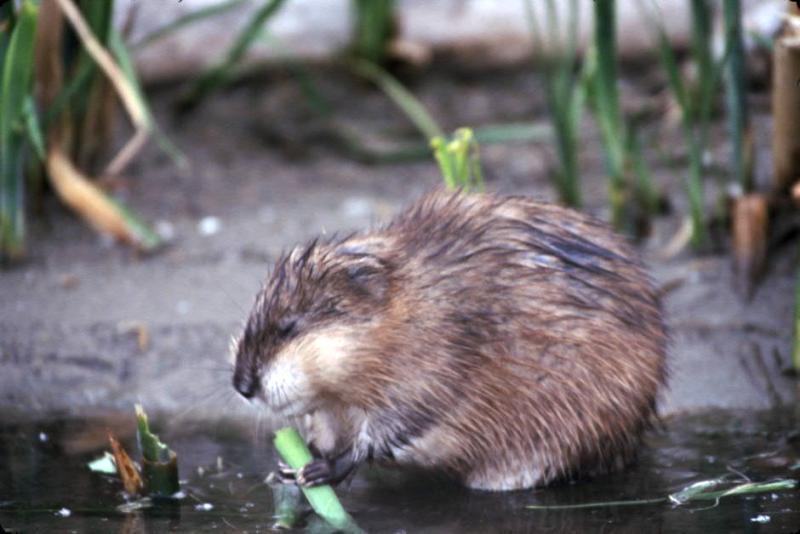Muskrat: The Beaver's Lesser Cousin
By Dave Hanks
Muskrats seem like little beavers Ė both are rodents, and both are in the same family. Both have similarities, but the Muskrat is smaller and has a round tail instead of a flat one. Their houses are even similar, except the Muskratís is constructed of herbaceous vegetation (often Bulrush) instead of wood.
I donít know how many times we have spotted this rodent, rushed to get a photograph, only to have it submerge out of sight for a long time. It can be a long time, because they can stay under for as long as 15 minutes. If that isnít enough, they can always enter a burrow dug under the waterís bank. The photos we have are strictly the result of good luck.
These animals seek wetlands where the water is 5 to 6 feet deep with plenty of sedges. They are mainly herbivorous but will eat frogs, clams, and small fish. The interesting thing about their diet is that they consume up to a third of their body weight each day Ė a tremendous amount for a mammal, although equaled and surpassed by birds.
They have a couple of unusual traits: communicating through their musky odors and heterothermia. This is the control of the blood flow to their feet and tail. This allows those parts to remain cooler than the main body.
Muskrats only live about 3 years in the wild. This calls for fast reproduction and the reaching of puberty as early as 7 months. Heavy reproduction is also necessary for the species survival because so many predators find this animal a very desirable food item.
(An early breakfast of Bulrush)
|
